Hyundai Accent: Starting System / Starter
| Item | Specification | |
| Rated voltage | 12V, 0.9 kW | |
| The number of pinion teeth | 10 | |
| Performance [No-load, 11.5V] | Ampere | 83.6 A |
| Speed | 3,500 rpm | |

1. Screw
2. Front bracket
3. Reducer assembly
4. Lever
5. Lever rest
6. Magnet switch
7. Satellite gear
8. Gasket sheet
9. Armature assembly
10. Yoke assembly
11. Adjust washer
12. Brush holder assembly
13. Flange nut
14. Through bolt
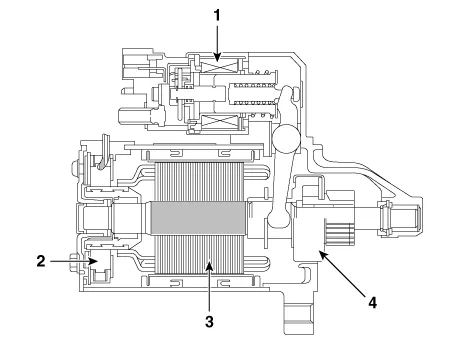
1. Solenoid
2. Brush
3. Armature
4. Over run clutch

1.Turn the ignition switch OFF and disconnect the battery negative (-) terminal.
2.Remove the air cleaner.(Refer to Engine Mechanical System - "Air Cleaner")
3.Remove the starter upper bolt (A).
Starter upper tightening bolt :49.0 - 63.7 N.m (5.0 - 6.5 kgf.m, 11.0 - 14.3 lb-ft)
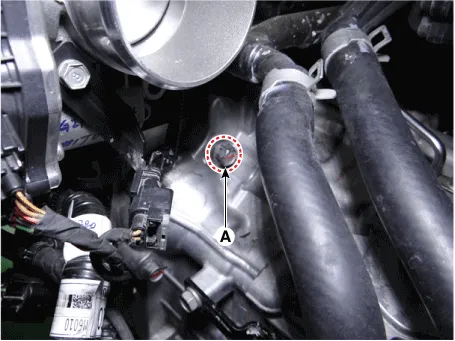
4.Remove the engine room under cover.(Refer to Engine Mechanical System - "Engine Room Under Cover")
5.Remove the stater solenoid "B" terminal mounting nut (A), and then disconnect the stater cable and ST connector (B).
Stater solenoid "B" terminal mounting tightening nut :11.7 - 16.6 N.m (1.2 - 1.7 kgf.m, 2.6 - 3.7 lb-ft)
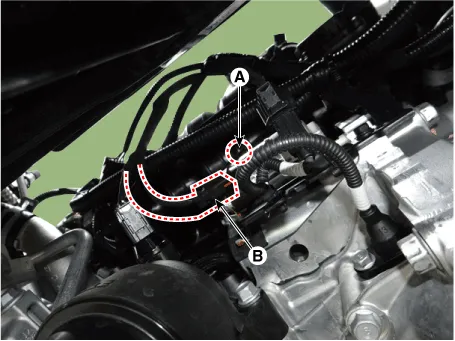
6.Remove the starter after loosening the mounting lower bolt (A).
Starter mounting bolt :49.0 - 63.7 N.m (5.0 - 6.5 kgf.m, 36.2 - 47.0 lb-ft)
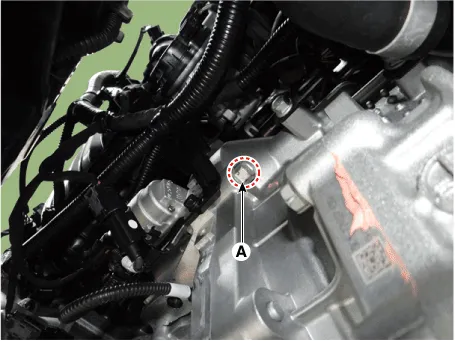
7.Remove the starter (A).
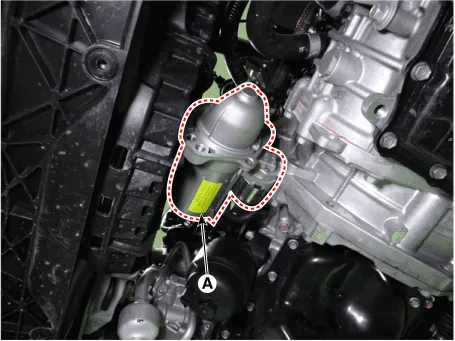
8.Install in the reverse order of removal.
1.Loosen the flange nut (A) and disconnect the M-terminal on the magnet switch assembly (B).
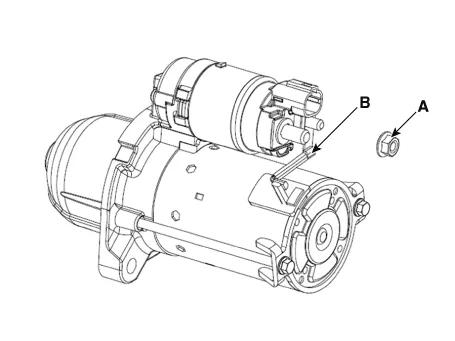
2.After loosening the screws (A), detach the magnet switch assembly (B).
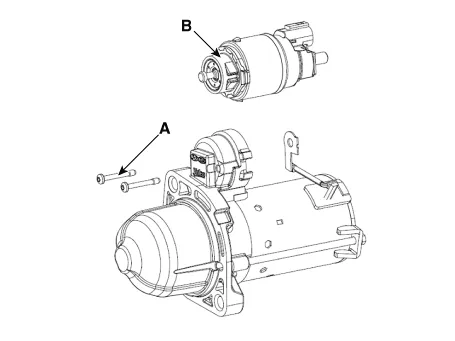
3.Loosen the through bolts (A).
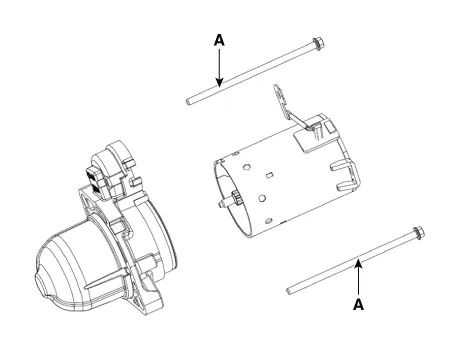
4.Remove the brush holder assembly (A), adjust washer (B), yoke (C), and armature (D).
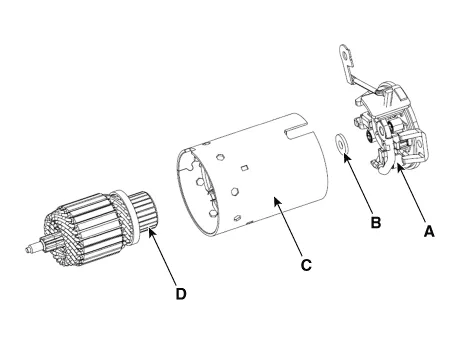
5.Remove the gasket sheet (A).
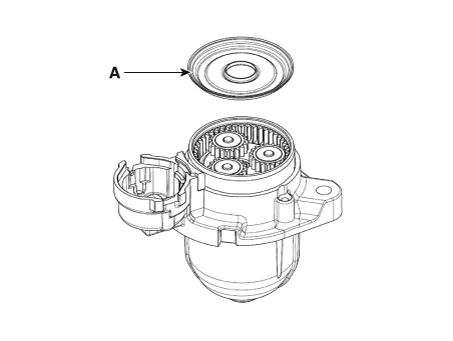
6.Remove the lever rest (A).
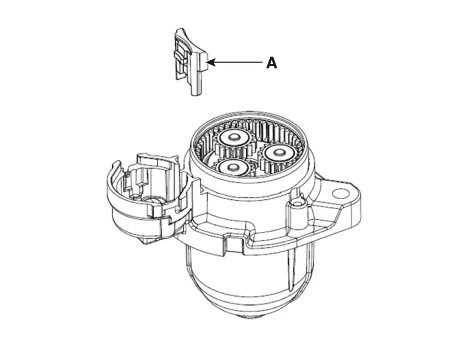
7.Disconnect the satellite gear (A).
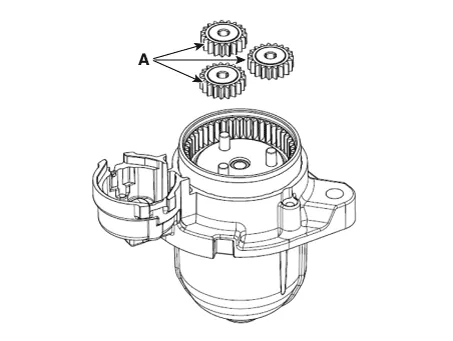
8.Disconnect the reducer assembly (A) and lever (B).
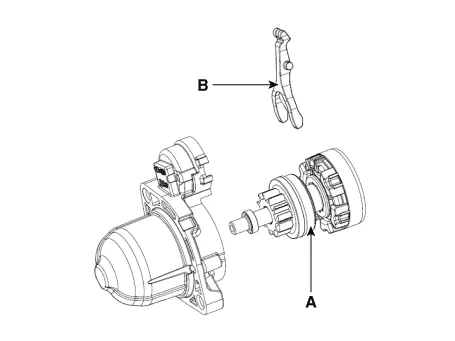
9.Press the stopper (A) using a socket (B).
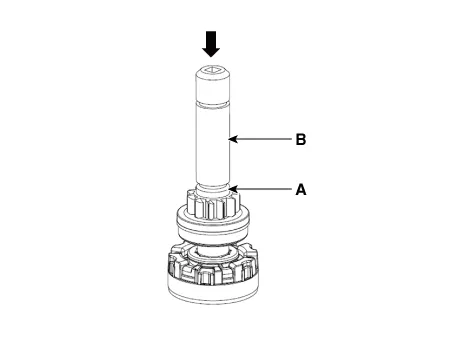
10.After removing the stop ring (A) using stop ring pliers (B).

11.Disconnect the stopper (A), overrunning clutch (B), internal gear (C) and drive shaft (D).
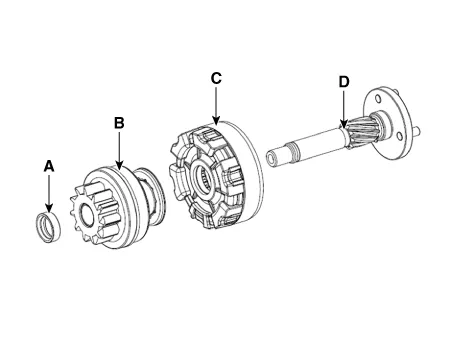

• Using a suitable pulling tool (A), pull the overrunning clutch stopper (C) over the stop ring (B).
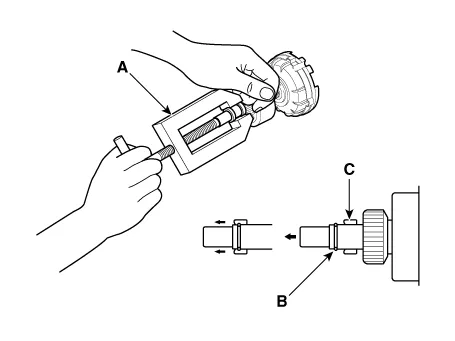
12.Reassembly is the reverse of disassembly.
1.Disconnect the lead wire from the M-terminal of solenoid switch.
2.Connect the battery as shown. If the starter pinion pops out, it is working properly.

• To avoid damaging the starter, do not leave the battery connected for more than 10 seconds.
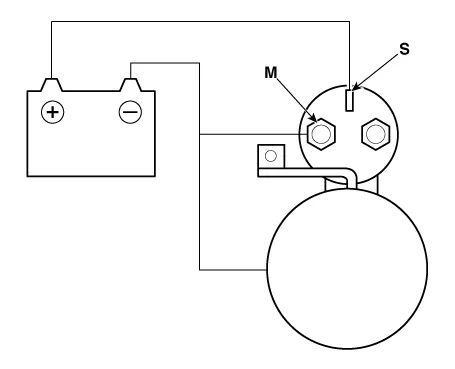
3.Disconnect the battery from the M terminal.If the pinion does not retract, the hold-in coil is working properly.

• To avoid damaging the starter, do not leave the battery connected for more than 10 seconds.
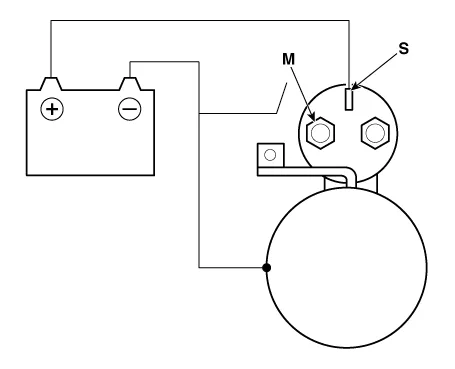
4.Disconnect the battery also from the body. If the pinion retracts immediately, it is working properly.

• To avoid damaging the starter, do not leave the battery connected for more than 10 seconds.
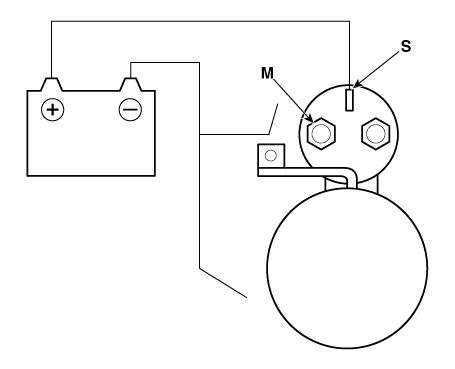
1.Place the starter motor in a vise equipped with soft jaws and connect a fully-charged 12-volt battery to starter motor as follows.
2.Connect a test ammeter (150-ampere scale) and carbon pile rheostats shown is the illustration.
3.Connect a voltmeter (15-volt scale) across starter motor.
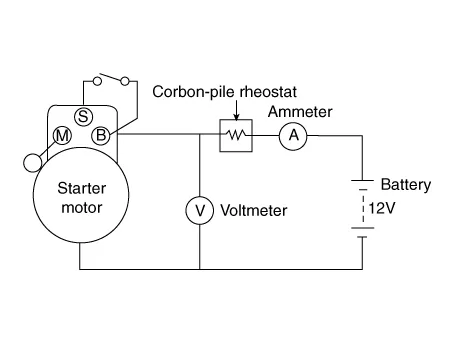
4.Rotate carbon pile to the off position.
5.Connect the battery cable from battery's negative post to the starter motor body.
6.Adjust until battery voltage shown on the voltmeter reads 11.5 volts.
7.Confirm that the maximum amperage is within the specifications and that the starter motor turns smoothly and freely.
| Item | Specification |
| Current (Max.) | 83.6 A |
| Speed (Min.) | 3,500 rpm |
1.Remove the starter.
2.Disassemble the starter as shown at the beginning of this procedure.
3.Inspect the armature for wear or damage from contact with the permanent magnet. If there is wear or damage, replace the armature.
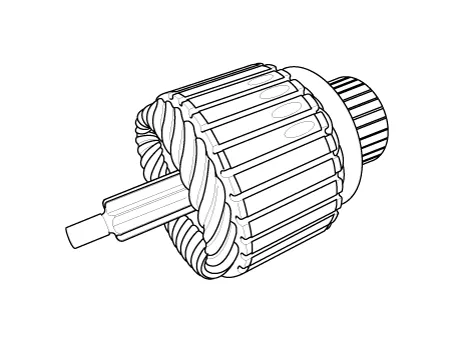
4.Check the commutator (A) surface. If the surface is dirty or burnt, resurface with emery cloth or a lathe within the following specifications, or recondition with #500 or #600 sandpaper (B).

5.Measure the commutator (A) runout.
• If the commutator runout is within the service limit, check the commutator for carbon dust or brass chips between the segments.
• If the commutator run out is not within the service limit, replace the armature.
Commutator runoutStandard (New) : 0.05 mm (0.0019 in.) maxService limit : 0.08 mm (0.0031 in.)
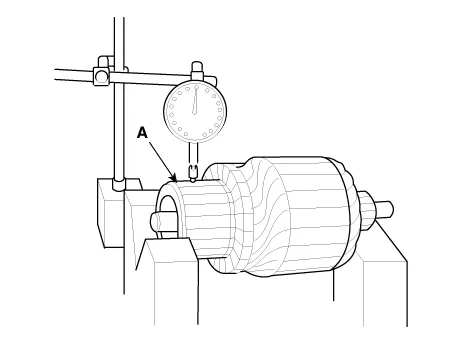
6.Check the mica depth (A). If the mica is too high (B), undercut the mica with a hacksaw blade to the proper depth. Cut away all the mica (C) between the commutator segments. The undercut should not be too shallow, too narrow, or v-shaped (D).
Commutator mica depthStandard (New) : 0.8 mm (0.0314 in.)Limit : 0.2 mm (0.0079 in.)
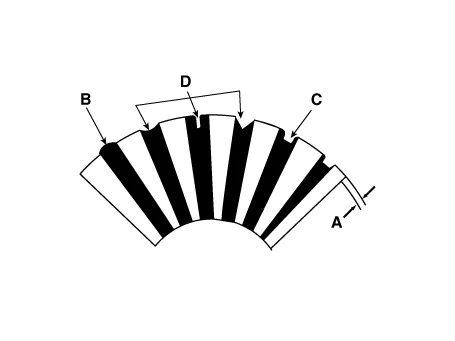
7.Check for continuity between the segments of the commutator. If an open circuit exists between any segments, replace the armature.
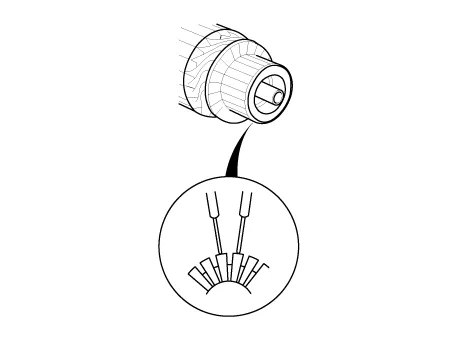
8.Check with an ohmmeter that no continuity exists between the commutator (A) and armature coil core (B), and between the commutator and armature shaft (C). If continuity exists, replace the armature.
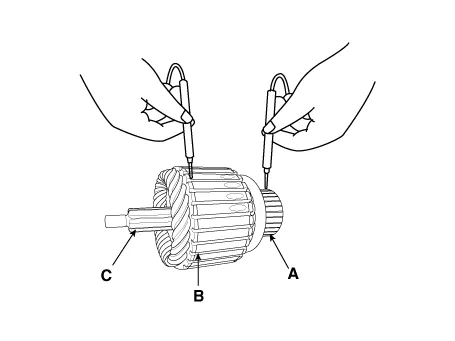
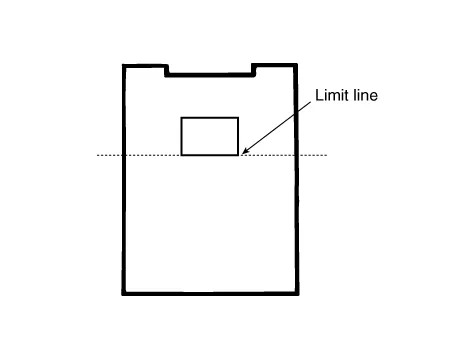
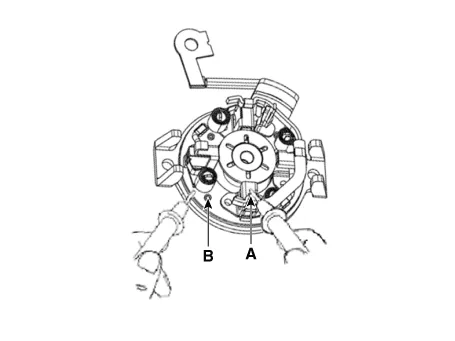
1.Slide the overrunning clutch along the shaft.Replace it if does not slide smoothly.
2.Rotate the overrunning clutch both ways.Does it lock in one direction and rotate smoothly in reverse? If it does not lock in either direction or it locks in both directions, replace it.
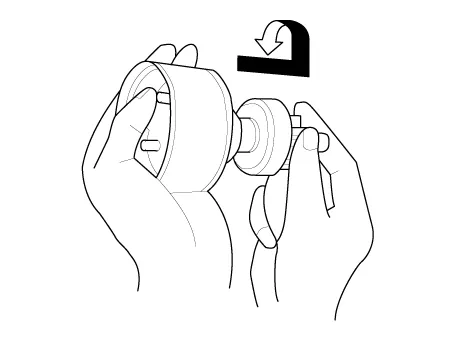
3.If the starter drive gear is worn or damaged, replace the overrunning clutch assembly. (the gear is not available separately).Check the condition of the flywheel or torque converter ring gear if the starter drive gear teeth are damaged.
1.Do not immerse parts in cleaning solvent. Immersing the yoke assembly and/or armature will damage the insulation. Wipe these parts with a cloth only.
2.Do not immerse the drive unit in cleaning solvent. The overrun clutch is pre-lubricated at the factory and solvent will wash lubrication from the clutch.
3.The drive unit may be cleaned with a brush moistened with cleaning solvent and wiped dry with a cloth.
Other information:
Hyundai Accent (HC) (2017 - 2022) Service Manual: Repair procedures
- Inspection Inspection Item • Battery efficiency inspection • Battery voltage inspection • Charging voltage insptection • General inspection • Terminal tightening state inspection • Engine/ transaxle ground state inspection • Wiring harness ground state inspection • Electrical Specified Value Inspection • Vehicle parasitic current inspection • Battery capacity inspection Battery Efficiency Inspection • Check that the battery cables are connected to the correct terminals.Hyundai Accent (HC) (2017 - 2022) Service Manual: A/C Pressure Transducer
- Description The A/C Pressure Transducer (APT) converts the pressure value of high pressure line into voltage value after measuring it. By converted voltage value, engine ECU controls the cooling fan by operating it high speed or low speed. Engine ECU stops the operation of the compressor when the temperature of refrigerant line is very high or very low irregularly to optimize air conditioning system.
Categories
- Manuals Home
- Hyundai Accent Owners Manual
- Hyundai Accent Service Manual
- New on site
- Most important about car


